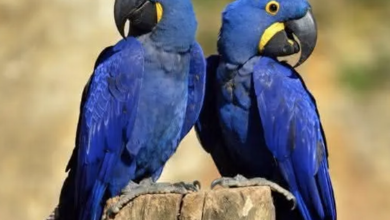Meet the Most Ferocious Animals in the Jungle
Navigating the Waters: Unveiling the Mighty Hippopotamus
Emerging from the depths of African rivers and lakes, the hippopotamus, or “river horse,” is an iconic and captivating creature. Renowned for its immense size, formidable appearance, and territorial nature, hippos have long held a place of fascination in human cultures. Beyond their impressive physical stature, hippos possess unique adaptations and behaviors that make them an integral part of their aquatic ecosystems. Let’s embark on a journey to explore the captivating world of hippos, delving into their biology, social dynamics, and conservation status.
Physical Characteristics

Hippos are the second-largest land mammals on Earth, surpassed only by elephants. Their massive bodies, weighing up to 3,200 kilograms (7,055 pounds), are supported by short, powerful legs. Their skin is thick and hairless, ranging in color from gray to brown, and their heads are large and adorned with small ears and eyes. Hippos have powerful jaws and large, sharp incisors that they use for defense and fighting. Their webbed feet enable them to swim effectively, and they can even hold their breath underwater for up to five minutes.
Social Structure and Behavior
Hippos are semi-aquatic, spending most of their time in water to regulate their body temperature and avoid predators. They are highly social animals, forming groups called herds that can range in size from a few individuals to over 100. Within these herds, there is a strict hierarchy, with dominant males establishing and defending territories. Hippos communicate through a variety of vocalizations, body language, and scent marking. They are known for their aggressive behavior, particularly when defending their territory or protecting their young.
Reproduction and Life Cycle

Hippos reach sexual maturity between 3 and 5 years of age. Mating occurs in the water, with males competing for the attention of females. After a gestation period of about 8 months, a single calf is born. The calf is born underwater but can swim to the surface within minutes. Calves are highly dependent on their mothers, staying close to them for up to two years. Hippos have a lifespan of about 30-40 years in the wild.
Ecological Importance
Hippos play a vital role in maintaining the health of their aquatic ecosystems. Their grazing habits help control plant growth, preventing overgrowth and maintaining the balance of aquatic vegetation. Additionally, their excrement provides nutrients to the water, supporting the growth of algae and other organisms. Hippos also serve as a prey source for predators such as lions and crocodiles, helping to regulate predator populations.
Conservation Challenges

Despite their widespread distribution in sub-Saharan Africa, hippos face numerous conservation threats. Habitat loss due to human encroachment and agricultural expansion is a major concern. Additionally, hunting for meat and ivory has contributed to population declines. Political instability and conflicts in some regions have also hindered conservation efforts.
Conclusion
Hippos are not just formidable creatures; they are ecologically important and integral to the health of their aquatic ecosystems. Understanding their biology, behavior, and conservation challenges is crucial for ensuring their continued survival and the preservation of the natural world they inhabit. By appreciating these remarkable animals and supporting conservation efforts, we can help safeguard their future and the delicate balance of the ecosystems they call home.




